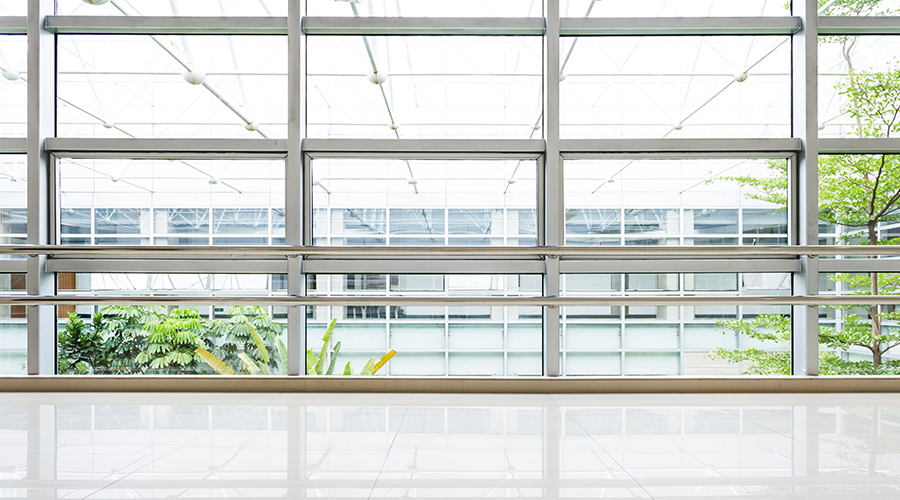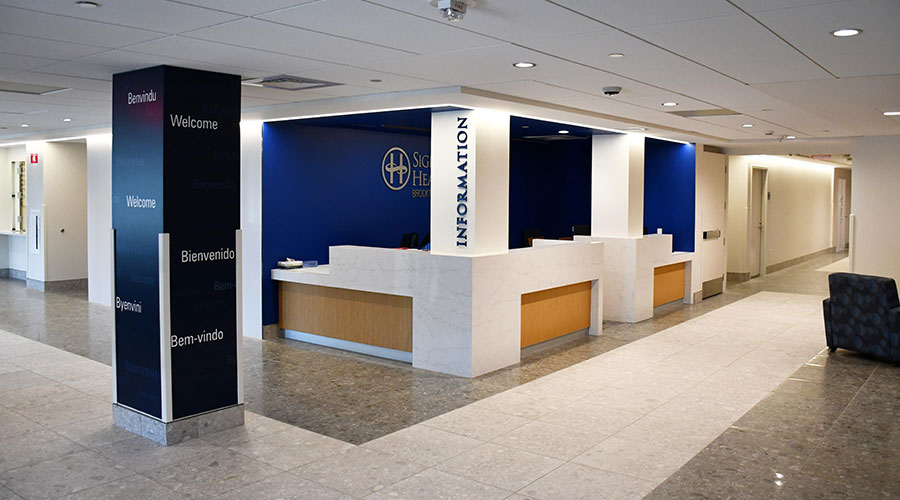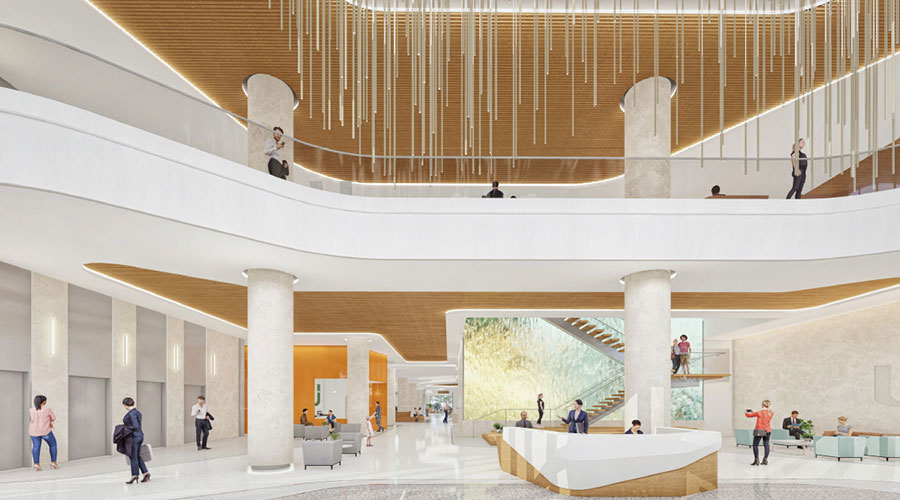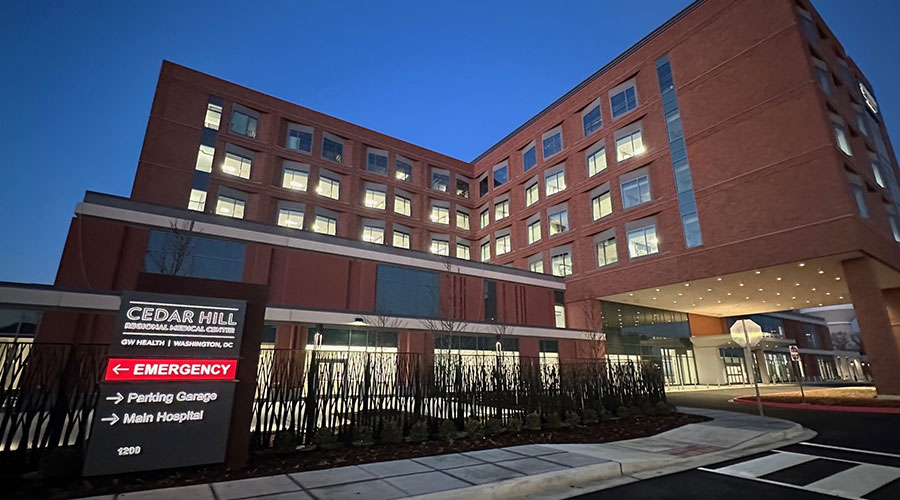Incorporating plants and greenery into has become common place in residential homes, with social media platforms dedicated to the very subject. However, not all commercial facilities have adopted the practice. Hospitals and other healthcare facilities have begun incorporating biophilic elements into their designs as more evidence comes forward about how plants and other greenery provides healing elements.
Healthcare Facilities Today recently spoke with Jennifer Kenson, principal of FCA about how healthcare facilities managers can work with designers on how to best bring biophilic design to their operations.
HFT: Biophilic design often includes elements like natural light, indoor plants, and water features. How do you ensure these elements are integrated effectively while considering the unique requirements of healthcare facilities, such as infection control and maintenance?
Jennifer Kenson: Natural light is the easiest concept to implement—the idea of access to natural light is found in FGI guidelines, WELL certification, LEED certification, and remains a useful strategy to reduce energy by using less artificial lighting. Indoor plants are more difficult as many clients have policies on plants within indoor spaces. Many infection control teams will not allow plant life in clinical areas, as the soil can harbor unwanted mold and bacteria. Sometimes, real plants are limited to main lobbies or more public-facing areas.
Some facilities will allow faux plants that provide a similar biophilic impact without the germs. Water features are typically not included in any healthcare settings, as they are strictly regulated by local and FGI guidelines, and mirror the concerns surrounding plant life due to similar issues with bacteria and mold. Designers must be creative in order to incorporate these ideas while recognizing the strict requirements. We can use technology to create virtual waterfalls, and the use of large-scale graphics printed onto impact resistant products can be used to incorporate the sense of natural settings and plants without the mishaps that might arise through the use of live plants.
HFT: Are there any cost considerations associated with implementing biophilic design in healthcare facilities, and how can they be addressed?
Kenson: The long-term maintenance and durability of materials should be factored into decision making. If the products won’t hold up under use, being replaced multiple times is not a sustainable approach. There are products available that can mimic natural colors, textures and patterns but are created with durable products such as PVC free rigid sheet plastics typically used as wall protection. Cast glass or textured glass is another good option for more decorative products. A design strategy should be implemented to determine where these products are used to maximize impact.
HFT: How do you ensure the long-term maintenance and sustainability of biophilic design elements in healthcare settings?
Kenson: We work with environmental services teams to ensure that materials can be properly maintained. It’s important to ask the environmental services staff exactly what products they clean with, and test the materials accordingly. It’s also good practice to ask what the typical staff have access to clean with generally. If the staff regularly cleans spills with a product before an EVS team member can arrive, the wipe products should be assessed too, especially on upholstery fabrics.
HFT: Can you walk me through the design process for a healthcare facility that incorporates biophilic design principles? How do you collaborate with healthcare professionals, patients, and other stakeholders to ensure a holistic approach?
Kenson: It is very similar to a typical design process. The initial visioning meetings with the stakeholders usually includes time reviewing biophilic principles, especially if this approach is new to the user group. The goal of the visioning sessions is to come to agreement on what elements and features they think are valuable to pursue. Once there is buy-in for a design approach, the process runs very similar to any other project process through phasing and delivery.
HFT: How do you take into account the diverse needs of patients in terms of age, culture, and medical conditions when planning a biophilic design for a healthcare environment?
Kenson: Creating inclusive designs doesn’t change with biophilic design approaches. Each project is tailored to the owner's specific parameters. Some of the elements that might be adjusted based on the use group are: the use of patterning, for instance a more subtle pattern over a more graphic or high contrast version; the use of brighter colors, or fewer blue/greens in geriatric patient care areas based on the aging eye; more control over a space for neurodiverse patients, including the ability to access quiet areas, in addition to more specific considerations like adjustable levels of lighting. The concepts of biophilic design are based on everyone’s basic instinct and natural reactions, so the ideas tend to appeal across cultures and variables.
HFT: How do you envision the future of biophilic design in healthcare? Are there emerging trends or innovations that you're excited about?
Kenson: As more clients become aware of biophilic design ideas and principles and the research behind it, we think it will become the go-to approach for creating healthy interiors. We are excited that this is another resource that the design community can utilize that supports our projects. The FGI guidelines have incorporated many of the evidence-based design ideas that have been proven in research studies. This research brought about the single patient room implementation with views of nature and daylight. In years to come, biophilic design principles will also be proven more concretely to provide direct benefits, and will become the norm in the built environment instead of the exception.
Overall, I’m excited by the acceptance and understanding of the biophilic design principles, and the incorporation of biophilia is a broader design trend. The ideas make sense, and it’s common sense that humans' natural responses should be considered when designing any type of space.
Mackenna Moralez is the associate editor of the facilities market.

 Electrical Fire Tests Resilience of Massachusetts Hospital
Electrical Fire Tests Resilience of Massachusetts Hospital Bomb Threat Alleged at Illinois Hospital
Bomb Threat Alleged at Illinois Hospital OCH Regional Medical Center Caught Up in Data Breach
OCH Regional Medical Center Caught Up in Data Breach Design Plays a Role in the Future of Healthcare
Design Plays a Role in the Future of Healthcare Cedar Hill Regional Medical Center GW Health Officially Opens
Cedar Hill Regional Medical Center GW Health Officially Opens